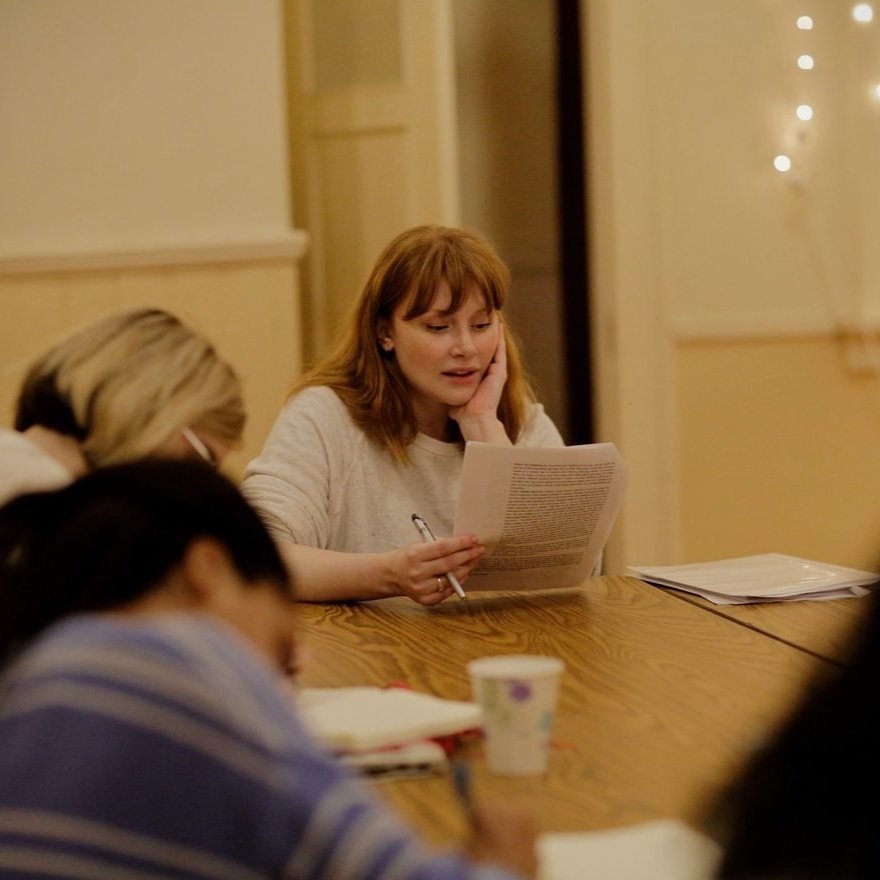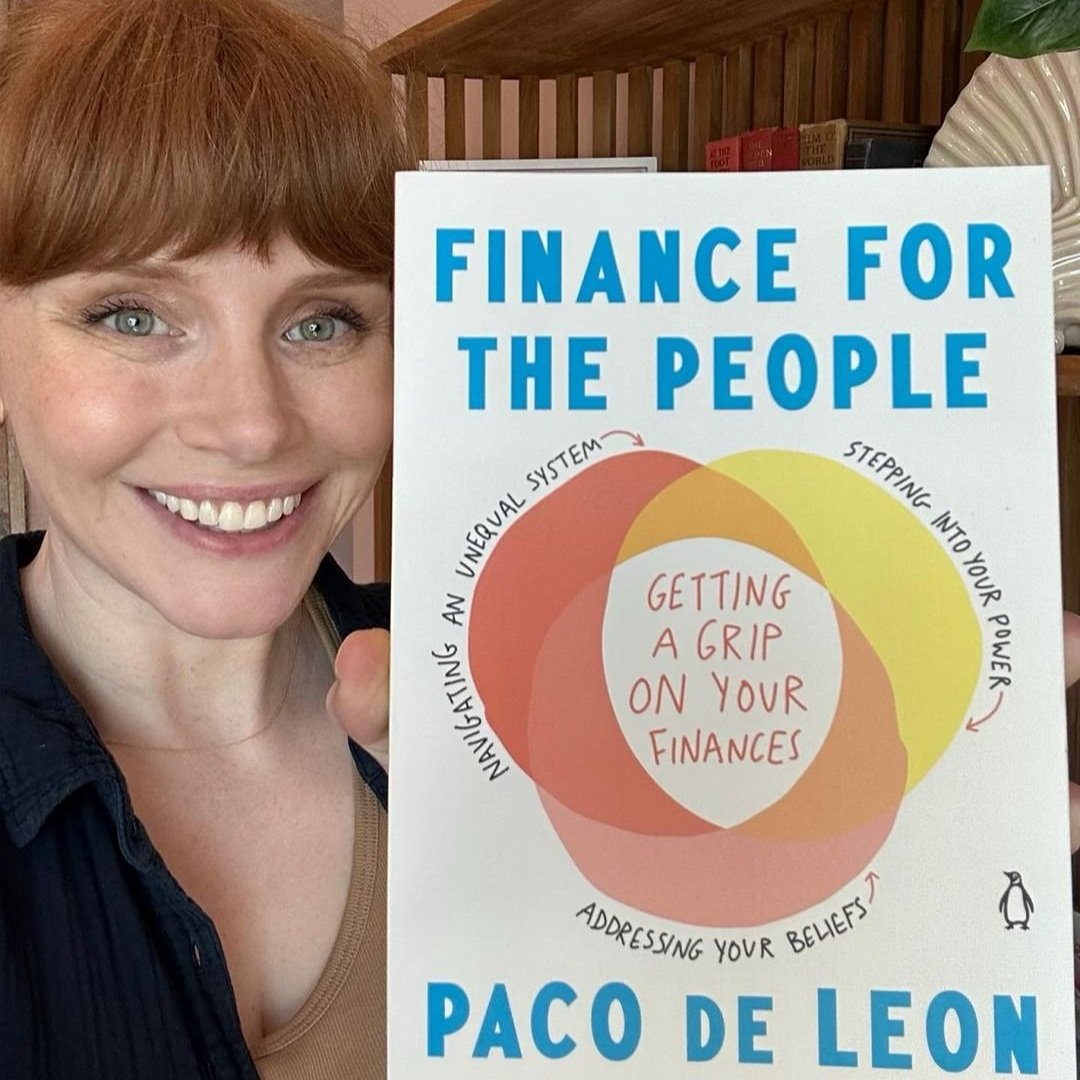There’s No Business IN Show Business
July 30, 2023
I recently had the distinct privilege of spending time with former Nine Muses Lab students who continue to get even more accomplished, insightful, and lovely with each passing day. (What’s the Nine Muses Lab? Click here to learn more).
While not every former student is a union member, the outcome of the AMPTP work-stoppage directly impacts their future, so I was grateful to connect with the emerging artists in my own community to hear more about what they’ve noticed and learned and what was most needed at this moment. Their solidarity with the unions was heartening.
Entering the business at this inflection point must feel like a sh*t storm. We’re all trying to figure out where the industry is going in real time and what it means for the future. When I began my career in New York City in the aftermath of 9/11, the collective uncertainty of that time necessitated a deep bond amongst the generation of emerging artists I was part of. Moments in crisis create opportunities to develop alliances with other creatives to connect, support, communicate, share, listen, and grow. This work stoppage will eventually end and I have hopes that on the other side of it is a more equitable business model. And relationships fostered during this time will have been forged in fire. (It’s called “Hot Labor Summer” for a reason — here’s a map of all the other labor movements happening around the country right now.)
A few weeks back I shared the “Emotional Cycle of Change” graph which describes the emotional rollercoaster of a learning curve. For me this concept helps me understand why optimism for the future comes with being informed about the present. That’s why I strongly believe that in order to create a sustainable career in the entertainment industry, one must seek to understand the way the industry functions (and dysfunctions!). It is still a VERY YOUNG, emerging industry.
It was a privilege to grow up around the industry that I eventually pursued a career in — in large part because I was exposed to the life around the work before I was exposed to the actual work. I saw up close and personal what it took and how disorganized, weird, and lawless it all felt. It was obviously an industry in constant flux, still finding its way again and again and again.
The situation we are in today finds working professionals and artists entrenched in two seemingly opposed realities: there is more opportunity than ever before to create visible work that can make an impact. We have direct access to a global audience. There are more outlets, there are more programs, and there are more jobs. But while there are more slots, drastic changes within the entertainment industry have put sustainable careers for professionals in serious jeopardy.
Perhaps the reason for this is what Brian Merchant of The Los Angeles Times described as “Silicon Valley’s invasion of Hollywood” where “in order to sustain the mythical levels of growth it has promised investors” studios are “turning to similar tactics — cutting workers’ hours, making work more precarious and unpredictable and reducing pay” (“Hollywood is on strike because CEOs fell for Silicon Valley’s magical thinking”).
For the last decade or more, with rare exceptions, the studios have paid significantly lower minimums on even the most successful and high-profile projects, offering compensation with a kind of “take it or leave it” tone. And outside of the studios — because today’s structural problems don’t only exist in the studios — the amount of “investor premiums” and “handling fees” that get saddled onto projects nowadays sap budgets dry. This puts creatives in the impossible position to decide whether or not they can afford to personally subsidize their work, leaving everyone who isn’t independently wealthy (or doesn’t have access to wealth, loans, and/or a safety net) to work without profit to an extent that threatens their very survival. We are at risk of the entertainment industry’s body of artists dwindling. And that is ultimately a loss for us all.
Solutions are slowly becoming more apparent (below are a few op-eds and articles that I’ve found to be very forward-thinking) and I have hope that SAG-AFTRA and the WGA will secure a strong deal that will lead to a better future. What I ultimately shared with the Nine Muses Lab students is that aligning with the unions is the fastest way to assure immediate protections for workers on the most fundamental level. The more unified we can be as creatives, the more leverage unions will have in negotiations. And it’s on everyone (but especially those in proximity to power like me) to stand for a more sustainable and equitable future.
Newsworthy & Opinions…
A changing culture and differing business models have led to an entertainment industry that lacks power brokers with the stature to bring on labor peace. Brooks Barnes of The New York Times reports on an industry-wide “[search] for someone to deliver a Hollywood ending.”
A larger issue underlying the AMPTP work stoppage is the lack of a standard streaming viewership metric studios can agree to use for residual payments. Tyler Aquilina of Variety argues that the end of the strike will be dependent on finding one — it’ll “form the backbone of entertainment industry workers' compensation in the years to come.” (Requires a Variety VIP+ Subscription or Instapaper App to read)
“‘Generative AI’ cannot generate anything at all without first being trained on massive troves of data it then recombines,” says actor, writer, and director Joseph Gordon Levitt. “Who produces that training data? People do. And those people deserve residuals.”
As artificial intelligence technology rapidly develops, crew union IATSE is launching a commission to study the “challenges and opportunities” that AI poses to the Hollywood workforce.
If you read any of the articles, I’d love to know what you think! What surprised you? What information brought you comfort or clarity? What would you add to the conversation? Let me know using the form below.
You May Also Like…
“Time To Rally: The First Step to Supporting Yourself”
The entertainment industry historically has very little financial transparency, and as a result, most folks are in the dark as to how a person can make a living in the arts. So how does an emerging artist access opportunities that will eventually lead to a livable wage, consistent work, and ultimately “making it” (a.k.a. “supporting” themselves with their art)?
“Money Tells the Truth”
“Remember that you coming into your power is a small, radical act within your circle of control.” ~ Paco de Leon, author, illustrator, musician, personal finance expert, and founder of The Yell Yeah Group.
Since creating The Hell Yeah Group, Paco has “dedicated her life’s work to helping folks feel less weird about money,” and through her articles and resources, she offers so much with artists in mind. Here are 3 of her resources to get started…
Sign up for Bryce’s newsletter and be the first to receive Q&As, behind-the-scenes updates on all things BDH, insider tips for navigating the entertainment industry — and more!


